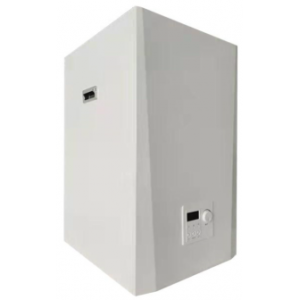Ara . 10, 2024 01:29 Back to list
Design and Efficiency of Liquid-to-Liquid Heat Transfer Systems in Industrial Applications
Liquid to Liquid Heat Exchanger Principles and Applications
A liquid to liquid heat exchanger is a crucial component in various industrial applications, facilitating efficient thermal energy transfer between two liquids at differing temperatures. This equipment serves to either heat or cool a liquid, depending on the requirements of the process involved, and is integral to optimizing energy consumption and enhancing operational efficiency in several sectors.
Basic Principle of Operation
The principle behind a liquid to liquid heat exchanger is straightforward it relies on the process of conduction and convection to transfer heat from one fluid to another without mixing them. When two liquids of different temperatures flow through the exchanger, the hotter liquid transfers its thermal energy to the cooler liquid. This heat transfer occurs across a barrier, typically consisting of metal plates or tubes that separate the two fluids but allow heat to pass through.
The efficiency of heat exchange is influenced by several factors, including the surface area of the heat exchanger, the temperature difference between the two fluids, and the flow arrangement (counterflow, parallel flow, or crossflow). In counterflow arrangements, for example, the two fluids flow in opposite directions, maximizing the temperature gradient and enhancing heat transfer efficiency.
Types of Liquid to Liquid Heat Exchangers
There are several designs of liquid to liquid heat exchangers, including shell and tube, plate, and spiral types, each suitable for specific applications and operational conditions.
1. Shell and Tube Heat Exchangers These consist of a series of tubes, one set carrying the hot fluid and another carrying the cold fluid. The design is robust, capable of handling high pressures and temperatures, making it popular in industries like petrochemicals and power generation.
liquid to liquid heat exchanger

2. Plate Heat Exchangers Comprising multiple thin plates stacked together, this type provides a large surface area for heat transfer in a compact design. They are often used in food processing and HVAC applications due to their efficiency and ease of maintenance.
3. Spiral Heat Exchangers In this design, the fluids flow in a spiral path within a series of flat plates. This configuration allows for effective heat exchange in a space-efficient manner and is usually employed in chemical processing applications.
Applications
Liquid to liquid heat exchangers find extensive usage across numerous sectors. In the food and beverage industry, they are employed for pasteurization processes, ensuring that products are heated to kill harmful bacteria without compromising quality. In HVAC systems, these exchangers help regulate temperatures in buildings, contributing to energy savings and comfort.
In the oil and gas industry, they are used for cooling and heating crude oil and its derivatives. Additionally, they play a critical role in power plants, providing cooling for various processes and improving overall energy efficiency. Furthermore, they are increasingly being integrated into renewable energy systems, such as geothermal and solar thermal systems, promoting sustainable energy practices.
Conclusion
The liquid to liquid heat exchanger is an essential technology in modern engineering, enabling the efficient transfer of thermal energy across a wide array of applications. As industries continue to prioritize energy efficiency and sustainability, advancements in heat exchanger technology will be vital in shaping future processes. Continuous improvements in materials and design methodologies promise to enhance the performance and reliability of these systems, ensuring that they play a key role in meeting both current and future energy demands. By optimizing heat transfer processes, liquid to liquid heat exchangers contribute significantly to reducing energy costs and mitigating environmental impact, solidifying their importance in an increasingly energy-conscious world.
-
Durable Cast Steel Concrete Pipe Mold Bottom Rings & Base Trays
NewsAug.23,2025
-
Centrifugally Cast Iron Water Main Pipe for Reliable Mains
NewsAug.22,2025
-
Durable Centrifugally Cast Iron Water Main Pipe
NewsAug.11,2025
-
Centrifugally Cast Iron Water Main Pipes for Reliability
NewsAug.10,2025
-
High-Quality Centrifugally Cast Iron Water Main Pipes
NewsAug.09,2025
-
Durable Cast Iron Water Main Pipe & Drainage Solutions
NewsAug.08,2025


